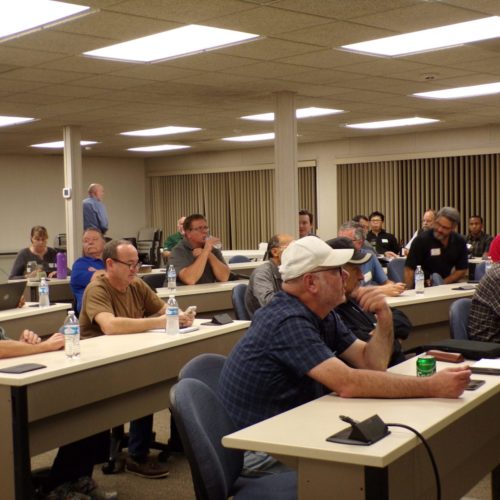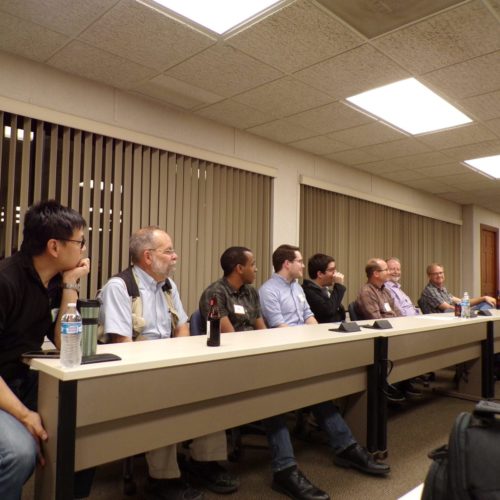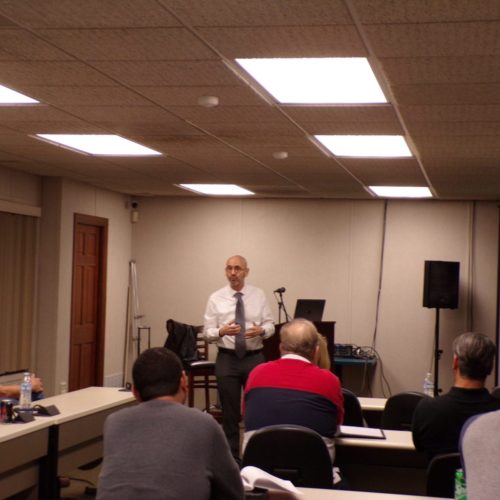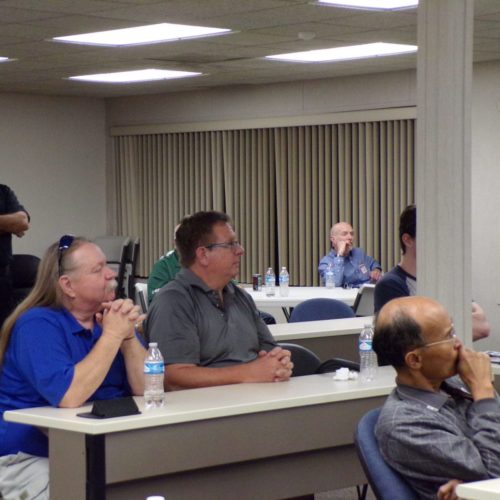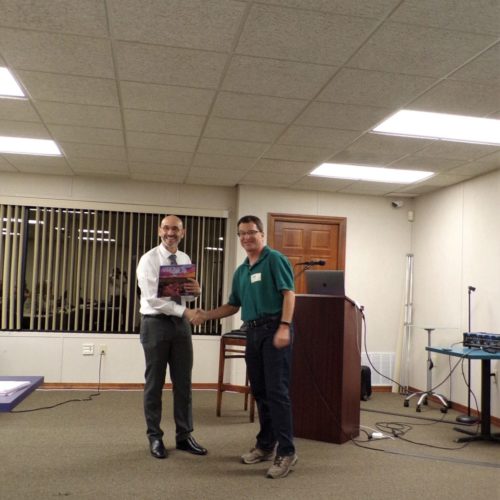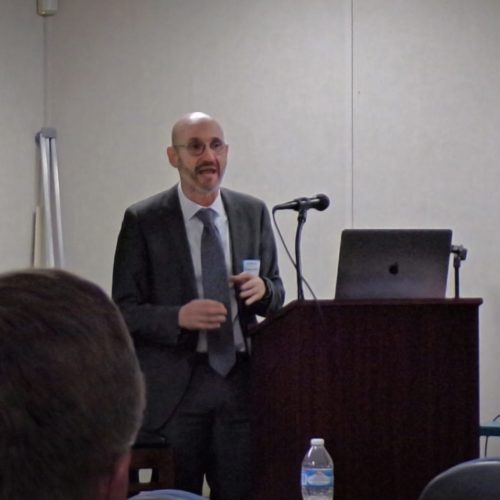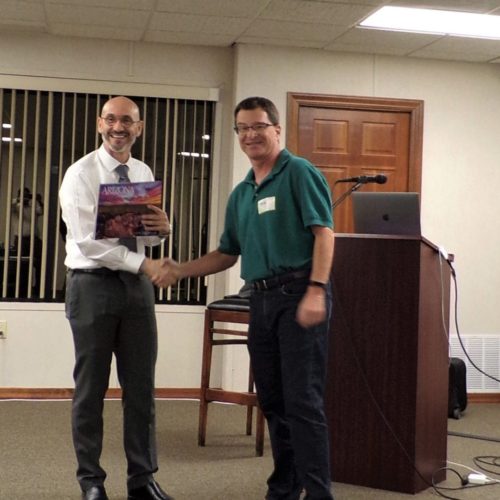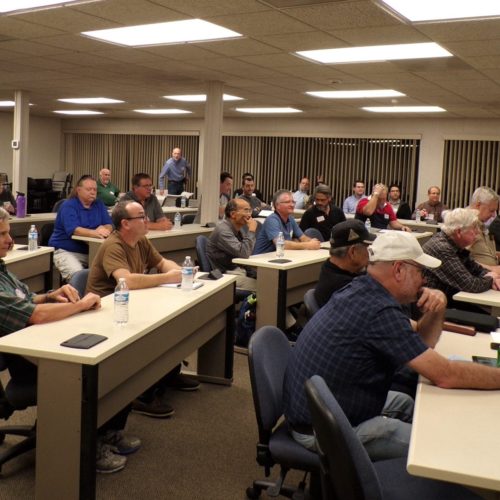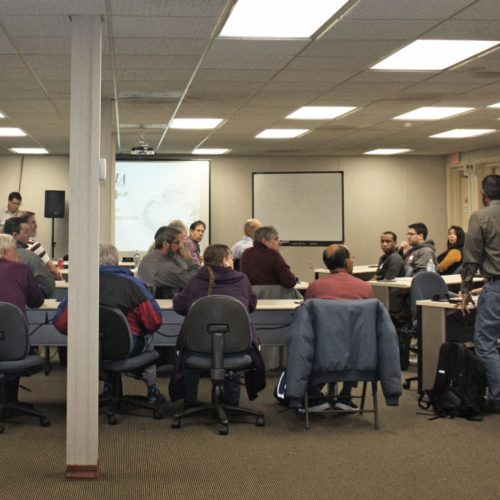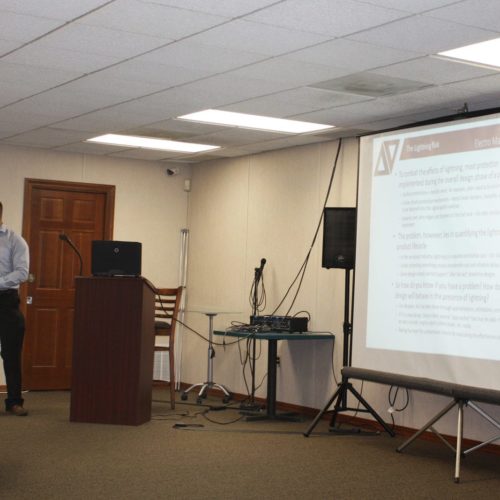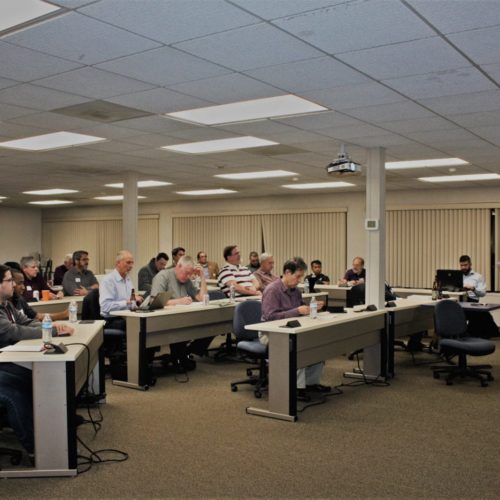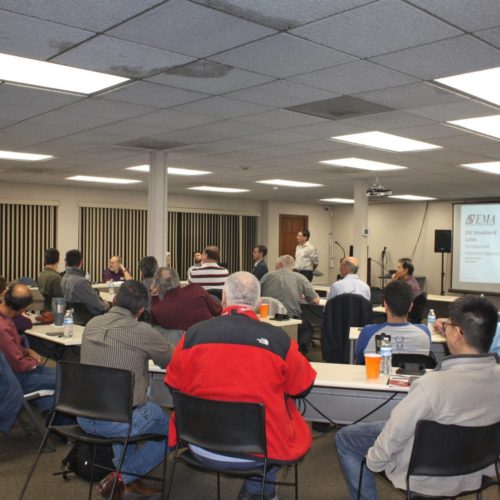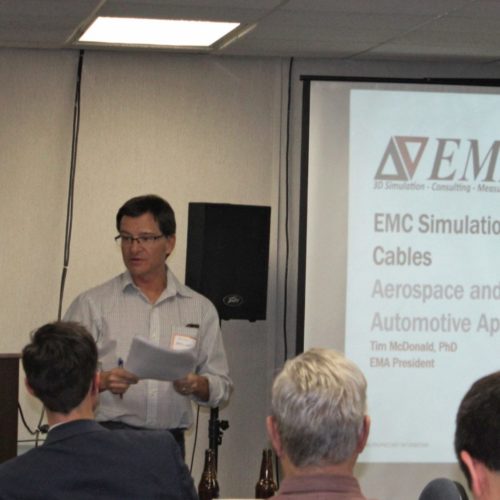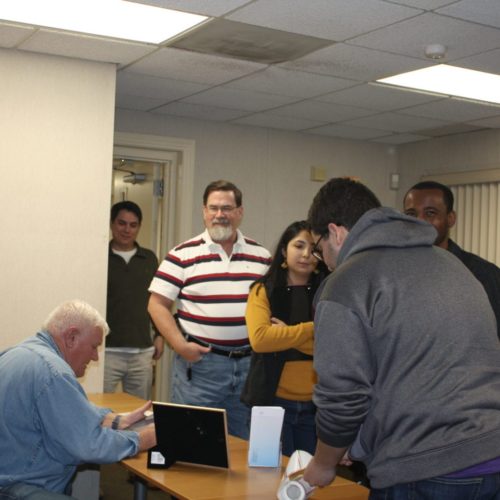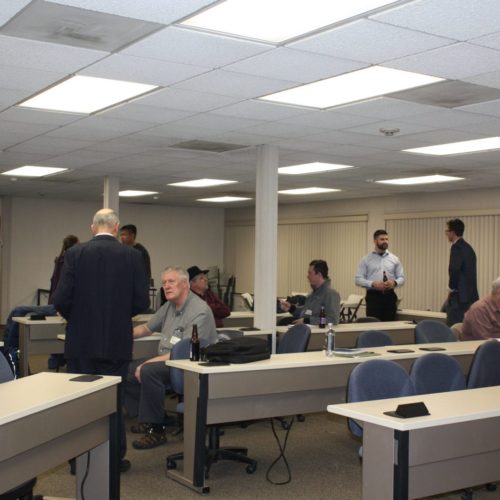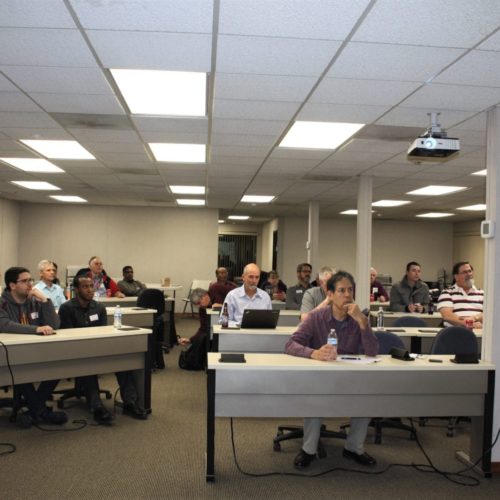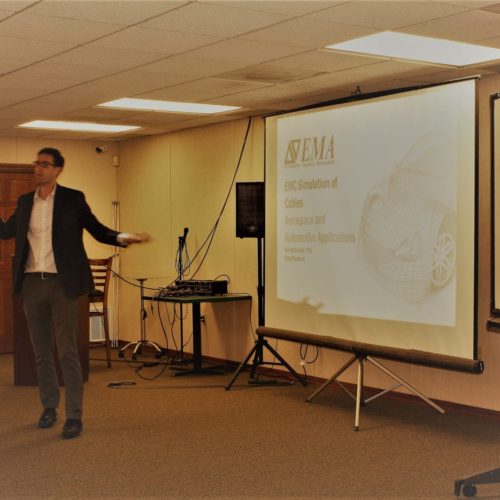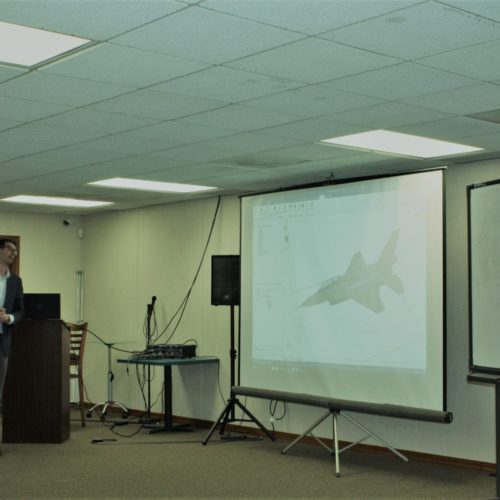2020 – 2021 Meeting Reports
The Rocky Mountain, Twin Cities, Phoenix, San Diego, SE Michigan, Sweden, and Italy EMC Chapters, Together with ANSI C63®, Announce a LIVE Webinar:
The Emerging Implications of Wireless Coexistence on Today’s Modern Vehicles
October 21, 2020
TECHNICAL PROGRAM
An Overview of Wireless Coexistence Measurements and Challenges: Why Can’t We All Get Along?
By Jason Coder, Shared Spectrum Metrology Group Leader, National Institute of Standards and Technology (NIST), Boulder, Colorado
Abstract: Wireless coexistence is a formidable problem that limits access and use of spectrum in today’s connected world. End-users, system administrators, network planners, and regulators all desire to understand how their wireless devices, systems, or networks will perform amid many other wireless devices before they are deployed. Given this desire, how can we design tests that quantify wireless performance? To start, can we pin down what quantities represent good wireless performance? How should test results be interpreted? This talk will present an overview of the concept of wireless coexistence in general, then discuss coexistence models, measurements, standards, and challenges. The goal of this presentation is to leave audience members with a better understanding of what coexistence is (or isn’t) and a deeper understanding of how we can tackle coexistence problems to enable better access to spectrum.
Wireless Coexistence Implications on Automotive Test and Measurement Applications
By Garth D’Abreu, Director, Automotive Solutions at ETS-Lindgren, Cedar Park, Texas
Abstract: In the rapidly evolving industry of autonomous, electric, and hybrid vehicles, the ability to successfully provide vehicle level antenna pattern measurements as well as EMC measurements to verify the performance of Advanced Driver Assistance Systems (ADAS) will be key to the future of this market and address public safety concerns. The automotive trends in wireless capabilities for high data streaming functions such as vehicle-to-everything (V2X) communication and other systems including anti-collision/adaptive cruise control radar as well as general wireless based functions such as navigation and infotainment, are just a few of the features impacting the functionality of today’s modern vehicles. This presentation details the challenges presented by these market demands, the implications of wireless coexistence on today’s modern vehicles, and how innovative testing solutions help drive the technologies forward to real-life applications.
SPEAKER BIOGRAPHIES

Jason Coder currently leads the Shared Spectrum Metrology Group in the National Institute of Standards and Technology’s Communications Technology Laboratory. During his tenure at NIST, Mr. Coder has worked in fundamental EM measurements, EMC, and antenna measurements. His current research focuses on developing new measurement methods for spectrum sharing, wireless coexistence, and interference. Mr. Coder currently serves as the Chair of the ANSI C63.27 working group on Wireless Coexistence, and the Chair of ANSI C63 Subcommittee 7 on Spectrum Etiquette. Mr. Coder received his B.S.E.E. and M.S.E.E degrees from the University of Colorado Denver in 2008 and 2010, respectively.

Garth D’Abreu is the Director, Automotive Solutions at ETS-Lindgren based at the corporate headquarters office in Cedar Park, Texas. He has primary responsibility for the design development functions worldwide within the Systems Engineering group, specializing turnkey solutions for Automotive EMC and Wireless test integration. Some of these more complex full vehicle and electronic sub-assembly (ESA) test chambers involve his coordination with the RF engineering team on custom components, and the certified, internal Building Information Modeling (BIM) team at ETS-Lindgren. Due to his considerable industry experience, he is the ETS-Lindgren global subject matter expert responsible for the ongoing research and development of Automotive EMC/Wireless test chambers for Regular, Autonomous, Electric and Hybrid Electric Vehicles, focusing on combination anechoic chambers, reverberation chambers, GTEM cells, EMP protection applications and wireless device (antenna measurement) test systems.
Mr. D’Abreu is a member of the IEEE EMC Society and active participant in standards development, including SAE, ISO and CISPR D automotive EMC standards, with over 25 years of experience in the RF industry. BSc degree in Electronics & Communications Engineering, from North London University, UK.
Register: Click here to register now on line or enter the following on your browser:
https://attendee.gotowebinar.com/register/8062889600649694480
Questions: Janet O’Neil, ETS-Lindgren, cell (425) 443-8106, email j.n.oneil@ieee.org
Meeting Summary:
On February 19, 2020, the IEEE Phoenix EMC Chapter hosted Professor Rubin Rubinstein at Compliance Testing Labs in Mesa Arizona. Professor Rubinstein gave a lecture on “The Lightning Phenomenon”. In attendance were 32 engineers and technologists in the electrical, RF, EMC and power supply engineering disciplines. The audience consisted of retirees, consultants and actively working professionals. A very friendly social hour started at 5:30 where Professor Rubinstein was very friendly and greeted worked those who were able to come early.
The meeting itself began a little before 7 pm, with Glen Gassaway (our chapter chair) discussing chapter business. Glen talked about our upcoming officer’s election, the upcoming 2020 IEEE EMC Symposium in Reno, and the upcoming 2024 Symposium in Phoenix. We then began the usual around-the-room introductions, including the companies that are hiring and individuals looking for work. There are several companies looking for EMI professionals in the Phoenix area.
Professor Rubinstein, discussed what lightning is, how the parameters of lightning are measured and how lightning is detected for study. He discussed four types of lighting and how they are generated as well as how they propagate. To measure lighting, the scientists use both homemade E-filed and H-field antenna attached to oscilloscopes and other measuring devices. Multiple arrays of the antennas are used in an area and are used to triangulate the exact location of the transient. To increase the odds of getting consistent measurement opportunities, the scientists setup studies at radio towers, wind turbines and man-made towers; however, they also artificially trigger lightning transients through rockets and lasers.
The lecture was well-received and generated numerous questions that Professor Rubinstein gladly answered. He was able to capture and maintain the attention of the audience through a well put together presentation and great sense of humor.
The meeting was closed at 8:30.
We are grateful to Compliance Labs in Mesa AZ for hosting and providing their facilities for this event.
All Phoenix photos taken by Shwezin Winko
February 2020 Meeting Photos
Meeting Summary
The Phoenix chapter of the IEEE EMC Society opened the 2020 calendar year with a meeting on January 14 at Compliance Testing, in Mesa AZ. The meeting was attended by 36 people.
The evening started at 05:30 pm with a social gathering and dinner, followed by opening announcements and chapter business directed by Glen Gassaway, chapter chair. This was followed by the usual around-the-room introductions, including the companies that are hiring and individuals looking for work.
The introductions were followed by a presentation titled ‘EMC Simulation of Cables, Aerospace and Automotive Applications’ presented by Tim McDonald and a second presentation entitled ‘Utilization of Simulation and Modeling for Risk and Cost Reduction Across Programs for Lightning’ by Justin McKennon. Both of these gentlemen are from Electro Magnetic Applications, Inc. (EMA), located in Lakewood CO. Tim is the president of EMA and holds a MS in electrical engineering. Justin is a principal scientist at EMA.
As interfacing signals entering and exiting boxes become faster and more sensitive, the need for the EMC engineer to protect them becomes more prevalent and the protection options harder to implement. The need for accurate modeling of cable threats as a design mitgator for both cost and approach is becoming even more necessary. As such, this presentation was very appropriate and well received. Tim provided a good introduction into high end computer modeling and simulation of time domain threats, how it is approached and how it can save costly time and redesign issues by providing accuracy early in the design. Justin gave a good overview of all the complexities and issues that arise in setting up a simulation model. The big take away is that a good protection approach is still a hybrid process requiring both modeling and test to provide the desired result.
After the presentation, Glen Gassaway thanked Tim McDonald and Justin McKennon for their interesting presentations! The meeting was closed at 8:35.
We are grateful to Compliance Labs in Mesa AZ for hosting and providing their facilities for this event.
All photos taken by Shwezin Winko
Presentation Copies



